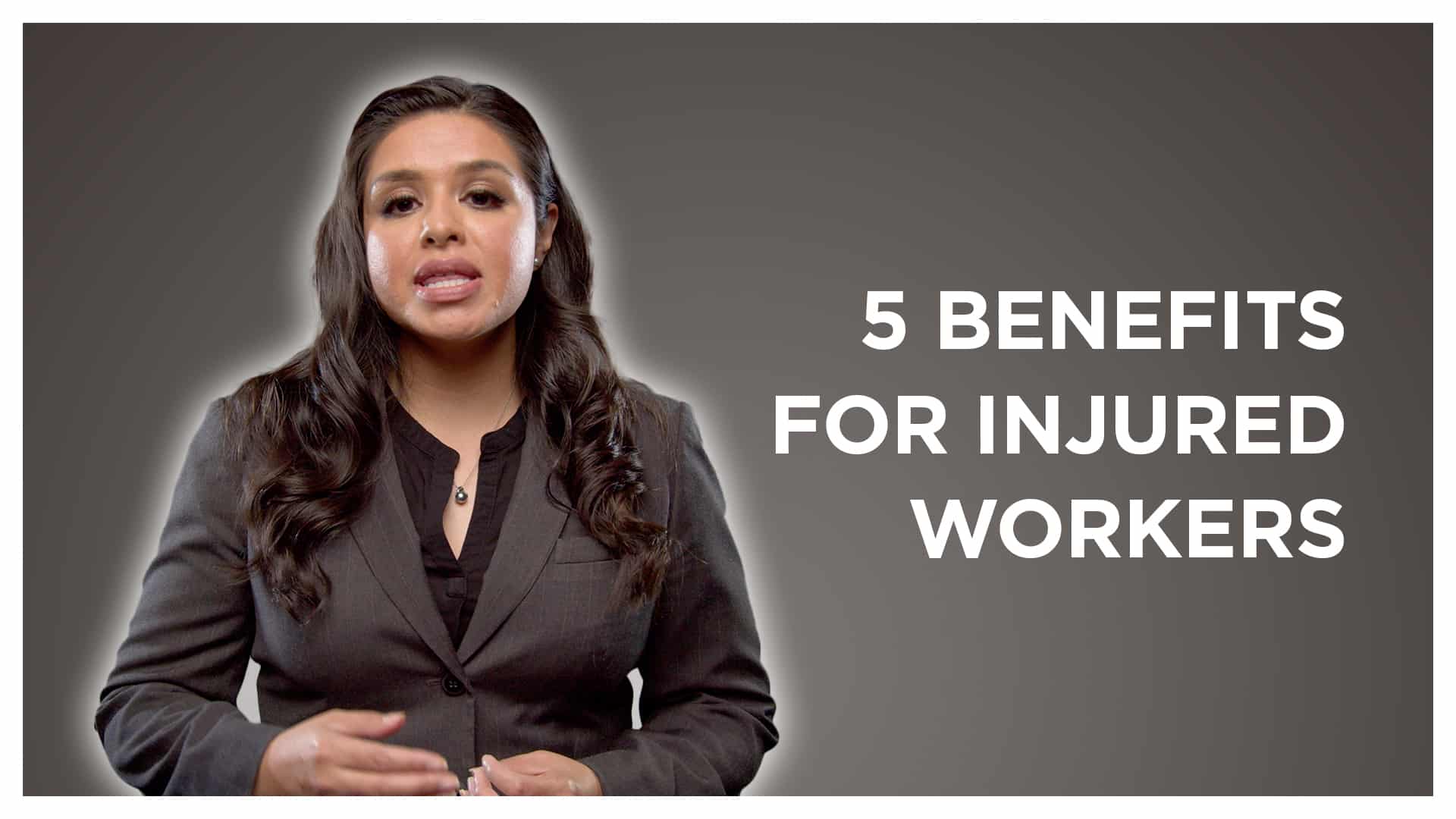What Benefits Are Available for Injured Or Sick Workers?
November 17, 2021 | Article by Chain | Cohn | Clark staff | Tips & Information Social Share

California adopted workers’ compensation laws to help and protect workers if they become ill or injured as a direct result of their jobs. But many people don’t realize the different benefits available to them today.
Chain | Cohn | Clark work injury lawyer Beatriz Trejo highlights in a new video the five basic benefits available to injured workers. These five benefits are spelled out below.
But first, it’s important to note that workers’ comp. is based on a no-fault system, which means that an injured or ill employee does not need to prove that the injury or illness was someone else’s fault in order to receive workers’ compensation benefits. And employers in California are required by law to pay for workers’ compensation benefits.
For more detailed information, please see the “Workers’ Compensation in California” guidebook, which is meant to help workers with job injuries understand their basic legal rights, the steps to take to request workers’ compensation benefits, and where to seek further information and help if necessary. And if you believe you have a case, please contact the work injury lawyers at Chain | Cohn | Clark for a free consultation.
===
1) Temporary Disability
Temporary disability benefits are payments you get if you lose wages because your injury prevents you from doing your usual job while recovering. It pays two-thirds of your pre-tax wages you lose while you are recovering from a job injury. These payments begin when your doctor says you can’t do your usual work for more than three days or you get hospitalized overnight. Generally, temporary disability stops when you return to work, or when the doctor releases you for work, or says your injury has improved as much as it’s going to. If you can do some work while recovering and your employer offers you this type of work, you can receive temporary partial disability payments if your wages while recovering are below a maximum limit set by law.
2) Medical Treatment
California workers’ compensation law requires claims administrators to authorize and pay for medical care that is reasonably required to cure or relieve the effects of the injury. The doctors who treat you must follow treatment guidelines referred to as the medical treatment utilization schedule. If it’s an emergency, your employer must make sure that you have access to emergency treatment right away. For non-emergency care, the claims administrator is required to authorize treatment within one working day after you file a claim form. While investigating your claim, he or she must authorize necessary treatment up to $10,000
3) Permanent Disability
Most workers recover from their job injuries, but some workers continue to have health problems. If your treating doctor says you will never recover completely or will always be limited in the work you can do, you may have a permanent disability, and this means that you may be eligible for permanent disability benefits. And you don’t have to lose your job to be eligible for these benefits. When you reach a point where your medical condition is not improving and not getting worse, your condition is called “permanent and stationary”. This is referred to as the point in time when you have reached maximal medical improvement. Click here to learn more about “P&S”.
4) Job Displacement Voucher
A claims administrator must offer you a supplemental job displacement benefit if your injury causes permanent partial disability, or your employer does not offer you regular, modified, or alternative work within 60 days after the claims administrator receives a voucher report. A supplemental job displacement benefit is a voucher that promises to help pay for educational retraining or skill enhancement, or both, at eligible schools. You can use the voucher to pay for tuition, fees, books, tools, or other expenses required by the school for retraining or skill enhancement, and for licensing or professional certification fees, related examination fees, and examination preparation course fees. Up to $600 of the voucher money may be used to pay for services of a licensed placement agency, a vocational or return-to-work counselor (a person who helps injured workers develop their goals and plans for returning to work), and resume preparation. Up to $1,000 may be used to purchase computer equipment. Up to $500 of the voucher money may be used upon request for miscellaneous expenses without receipts or other documentation. Learn more about the voucher system here.
5) Death Benefits
Death benefits are payments to a spouse, children or other dependents if an employee dies from a work-related injury or illness. This includes burial expenses. The amount of the death benefit depends on the number of total and/or partial dependents. In the case of one or more totally dependent minors, death benefits will continue until youngest minor’s 18th birthday. Learn more about death benefits, including amount limits, by clicking here.
———
